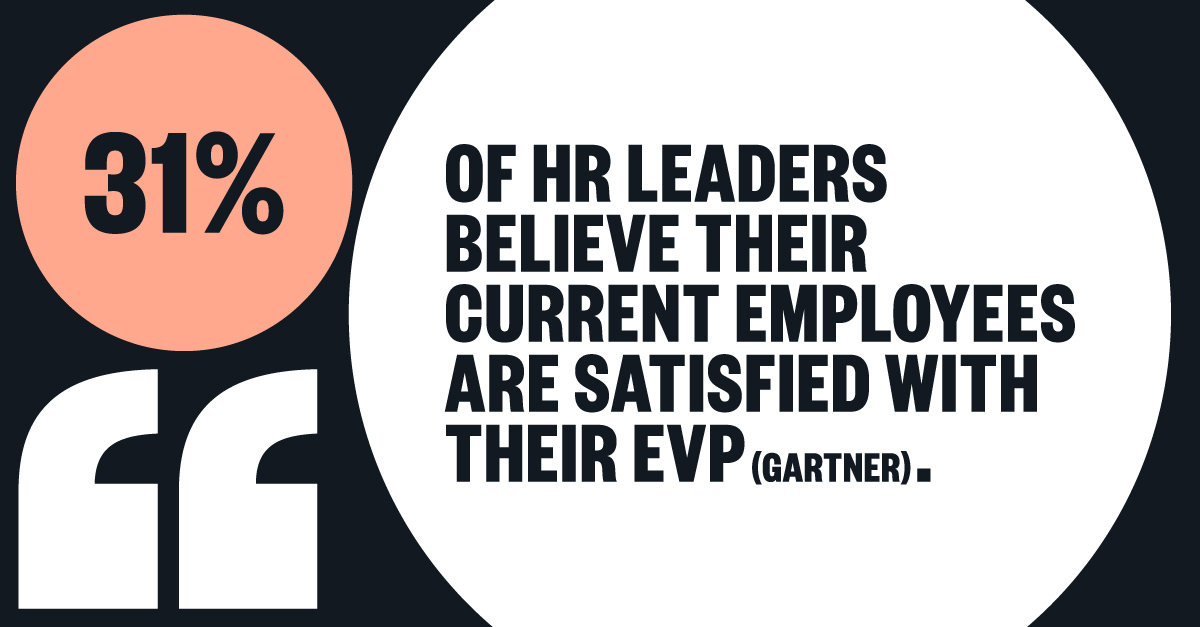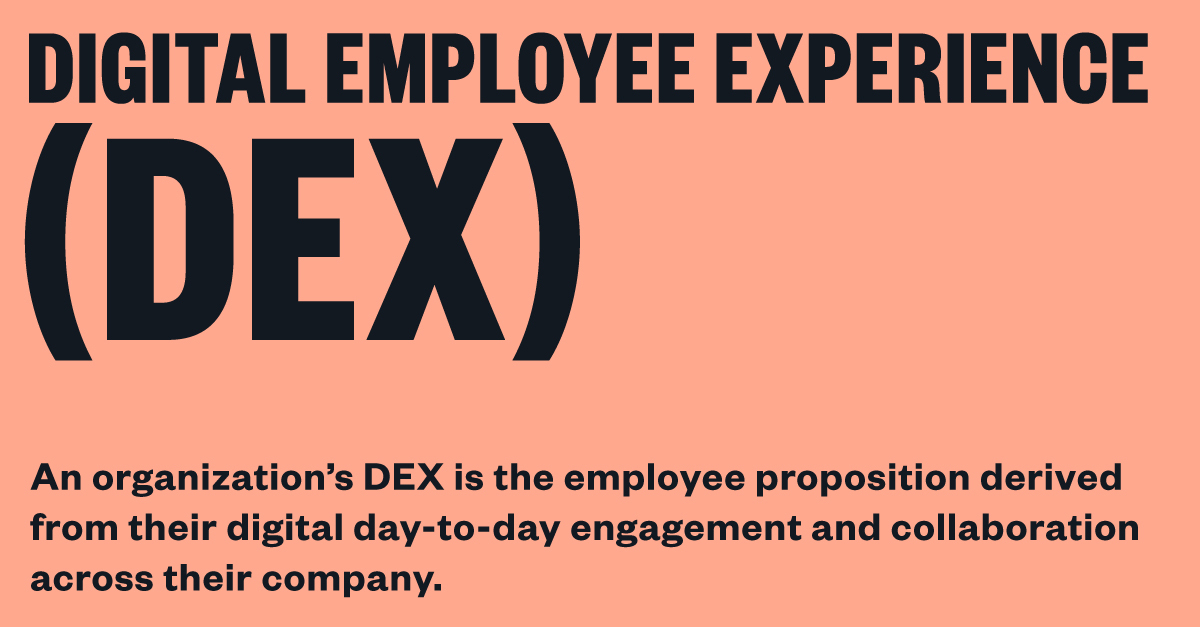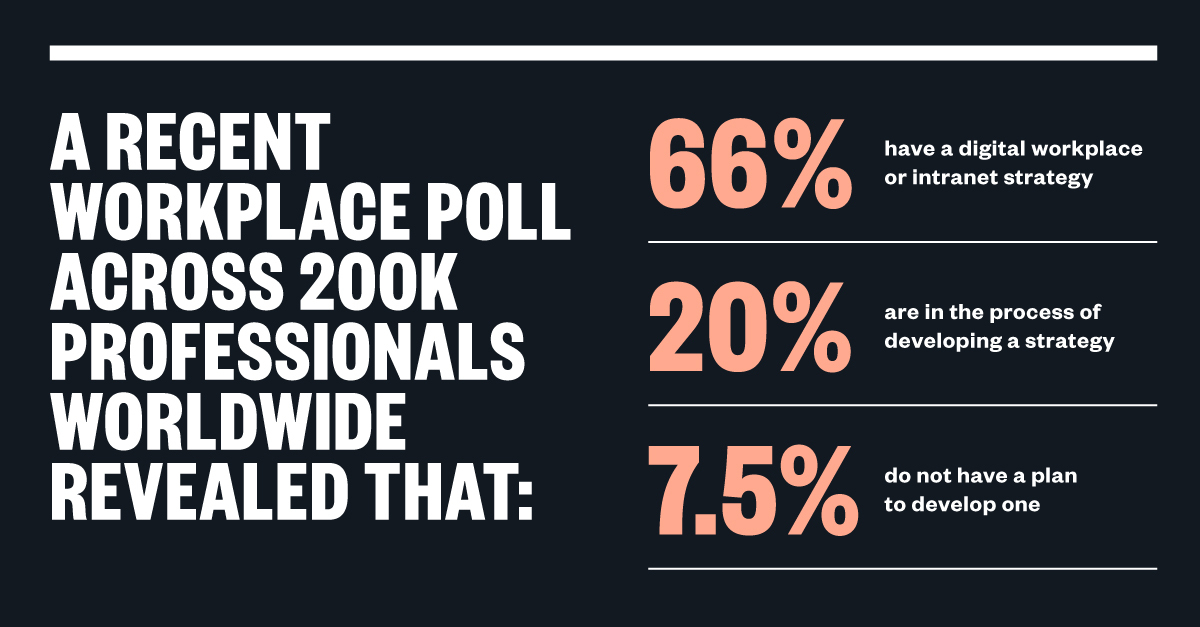The Rise of the Modern Intranet
In a short time, the way we work has been fundamentally turned upside down. Remote work, hybrid schedules, and 100% digital companies are emerging as the standard for workplaces today.
What do these new developments mean for organizations trying to build a strong and cohesive company culture? According to Gartner, only 31% of HR leaders agree their organizations have the necessary culture to drive future business performance.

In response, many leaders have turned their focus to The Digital Employee Experience (DEX). An organization’s DEX is the employee proposition derived from their digital day-to-day engagement and collaboration across their company.

Furthermore, some are embracing a concept that feels simultaneously like a blast from the past and the next big thing: The Modern Intranet.
This is nothing like the friction filled, one-size-fits-all link farm of yesterday that’s been left behind by many organizations. Champions of the modern intranet see it as more of a digital town square for employees—a personalized hub for individuals to access a diverse application landscape, engage across their organization, and enjoy the critical cultural moments that they may have been missing since hybrid work began.
A recent poll across 200,000 professionals showed that over 85% of organizations have a digital workplace or intranet strategy or are in the process of developing one. As organizations continue to lean into hybrid work it will become critical to adopt a modern intranet to help facilitate the employee DEX and build a valuable internal brand and culture.

Here are three key strategic considerations to ensure that your modern intranet delivers your employees an experience that builds a strong internal brand and culture.
1. It should feel like you
The problem: Employees don’t engage with intranets that feel like they were made by someone else.
The solution: Maintain consistency and establish a strong Employee Value Proposition.
Effective experiences grow from a clear understanding of what the brand’s value proposition is for a given audience. In this case, your employees. It’s important to understand this promise before architecting or prioritizing any kind of content or functionality. The benefits of an employee value proposition are not to be taken lightly – ensure that it’s comprehensive, current, and relevant.
The facts: Only 31% of HR leaders believe their current employees are satisfied with their EVP (Gartner).
As for the user experience of your intranet, look towards your customer-facing site for inspiration. This often already serves as the best manifestation of your brand’s voice and design style. Not only will this help strengthen the consistency of your brand, it will provide your employees with a familiar tone and visual cues to engage with—making the experience more organic.
We brought this approach to life with the private equity firm THL. We developed their public facing website, aimed at management teams and LP’s, as well as their internal platform. The work proceeded in parallel, with the same team overseeing both streams of development. The result was two perfectly synchronous digital experiences.
2. It needs to help the people who use it
The problem: Traditional, legacy intranets served as dumping grounds for info that rarely addressed employee problems.
The solution: Treat your employees like your customers.
Creating a modern intranet is a remarkable opportunity that rarely occurs when you’re developing a customer-facing experience. To start, rather than laboring to define your audience, you know exactly who your end users are. You also have unfettered access to them. Given that, it’s surprising that more companies don’t spend more time leveraging their employees.
The facts: A recent study states that nearly 60% of respondents state their organization publishes customer satisfaction surveys but don’t conduct internal employee experience surveys.
What do your employees want? The only way to find out is to ask them. Conducting group and one-on-one interviews as well as surveys will help pinpoint what they see as specific requirements. From there, you can connect each requirement with a corresponding business value and prioritize accordingly.
Once again, we put this tact to the test when constructing THL’s intranet. We interviewed key employees and stakeholders across the organization to define the requirements for the intranet. Then we developed a prioritized document to define and categorize each by intended impact to rank order each. We used this method to inform nearly every aspect of the experience—including the platform for the intranet itself.
3 . Turning it on is only the first step
The problem: An intranet is only valuable if it’s widely adopted.
The solution: Build a plan to get employees on board.
Merely building a new digital experience isn’t enough to ensure widespread adoption. Your best bet is to develop and execute a multidimensional launch strategy to drive awareness and engagement of your new intranet. A strategy like that requires investment, but some figures suggest that an early buy-in may pay dividends in the form of increased productivity.
The facts: A recent study states that many organizations have less than 45% of unique visits to their intranet per month whereas other high performers can see that statistic go above 87% (Origami).
Here are a few critical dimensions to consider when thinking about your intranet deployment plan.
Onboarding
Create a detailed onboarding plan for employees to establish awareness and user orientation with the site before launch. This should consist of initial announcement messaging as well as training for employees. In addition, have tutorials and other user materials available at the ready to drive comfort and confidence amongst teams.
Content Strategy
Develop a content plan to keep the site fresh and give employees a reason to revisit the Intranet. Identify the high-profile areas of the site and create an editorial calendar that’s integrated with key moments and triggers in your organization. Doing so will help you pace the creation and publishing of new content to your intranet.
Measuring Performance
Review the analytics of your intranet often and set up ongoing performance reports to adopt a routine to identify the strengths and weaknesses of the intranet. This intelligence will allow you to recommend and implement testing and other optimizations to continue to improve performance metrics. Also, regularly publish an executive summary of performance to senior leaders and stakeholders of the organization to reinforce the value of the site.
In Conclusion
In today’s fragmented workplaces, building a strong and cohesive culture requires a digital employee experience strategy. By embracing the same principles for customer engagement, brands can shape how it feels to work as a hybrid or remote team member. Tools like the modern intranet embrace this thinking, swapping plug-and-play structure for bespoke experiences that reinforce the tenets of their internal brand.


